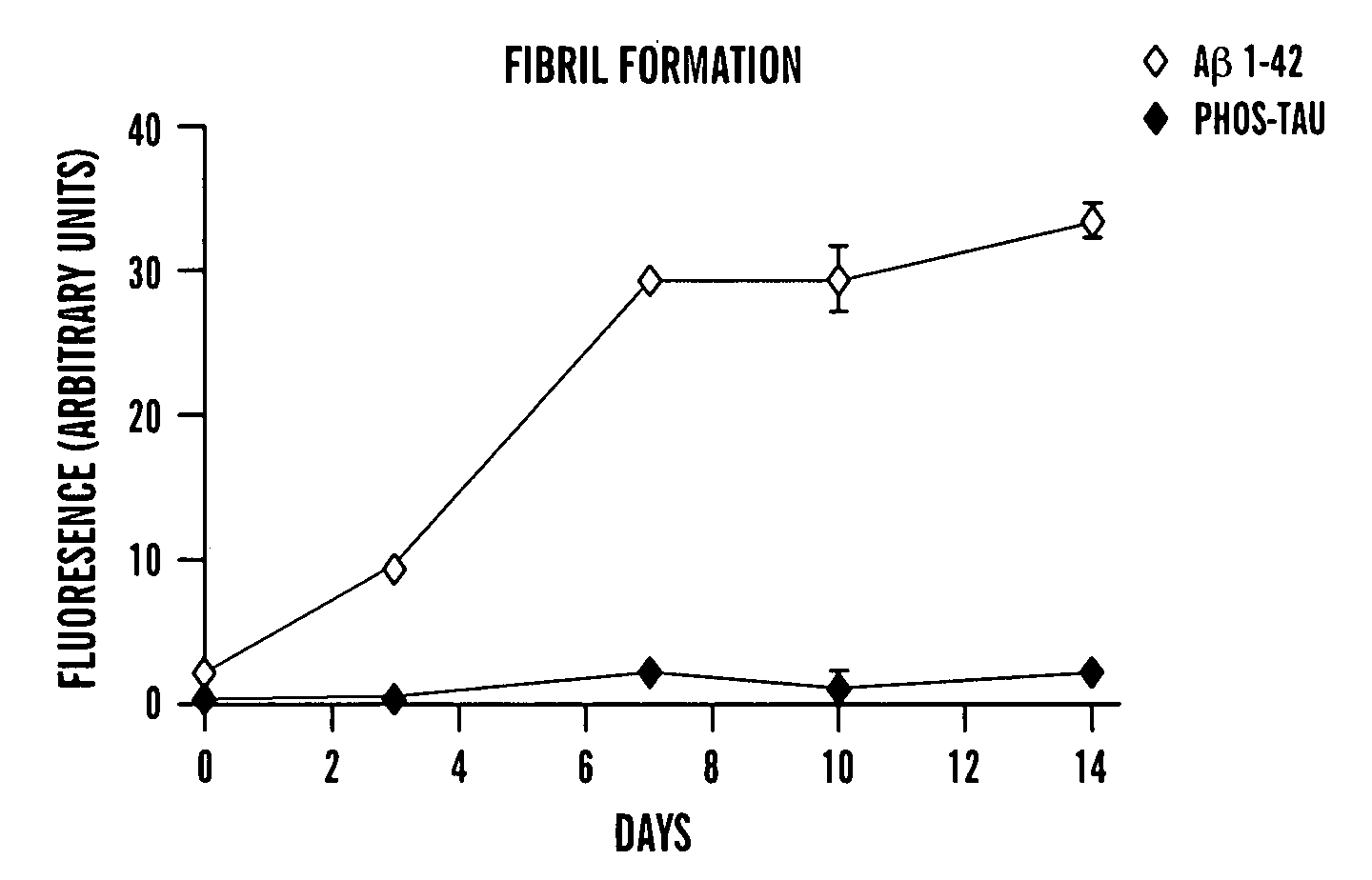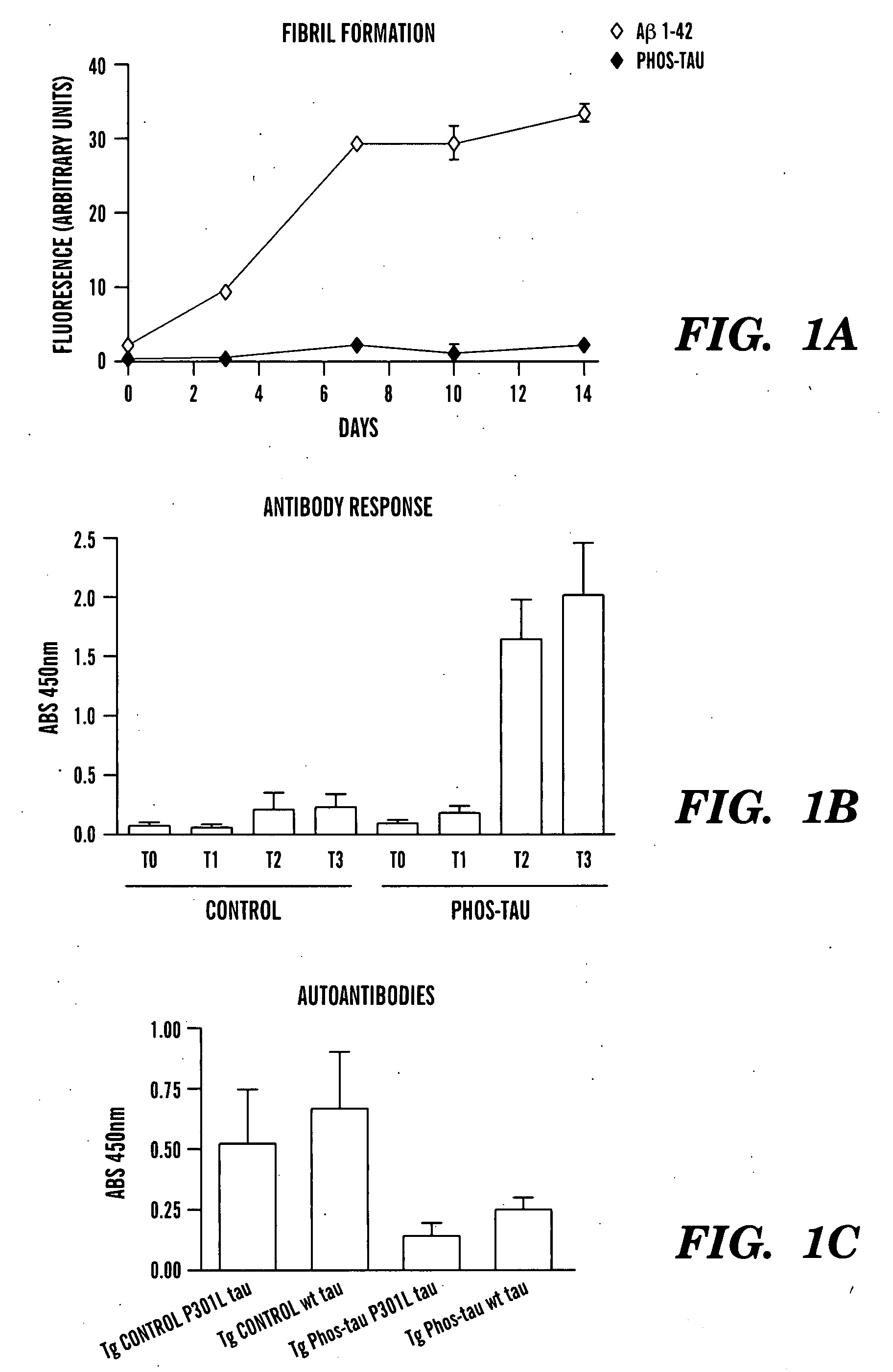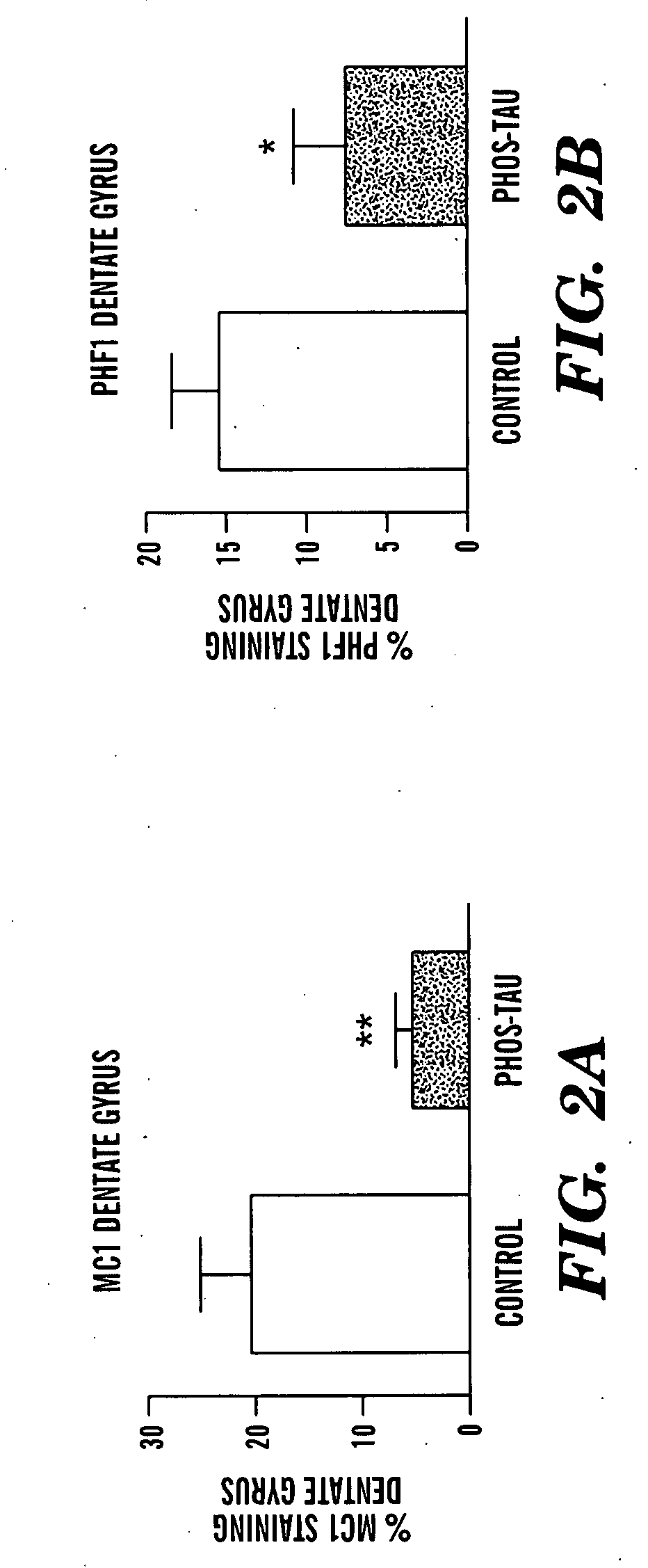Immunotherapy for clearing pathological tau conformers
- Summary
- Abstract
- Description
- Claims
- Application Information
AI Technical Summary
Benefits of technology
Problems solved by technology
Method used
Image
Examples
example 1
Peptides
[0074] The peptide immunogen, Tau 379-408 [P-Ser396,404] was synthesized at the Keck facility (Yale University), by the solid-phase technique on a p-methylbenzhydrylamine resin, using a Biosearch SAM 2 synthesizer (Biosearch, Inc., San Rafael, Calif.). The peptide was cleaved from the resin with HF and then extracted with ether and acetic acid before lyophilization. Subsequently, it was purified by HPLC with the use of a reverse-phase support medium (Delta-Bondapak) on a 0.78×30 cm column with a 0-66% linear gradient of acetonitrile in 0.1% TFA.
example 2
Expression and Purification of Recombinant Tau Protein
[0075] pcDNA3.1(+) mutant tau P301L construct, expressing tau which has two N-terminal exons (58 residues) and contains all the microtubule (MT) binding repeats in the longest human tau isoform. The cDNA was subcloned in pET30a vector using standard methods. The plasmid DNA was prepared using the Qiagen protocol (Qiagen, Chatsworth, Calif.), and used to transform Escherichia coli BL21-DE3 competent cells. The clones were sequenced after transformation to verify the presence of the desired mutation and to confirm that the rest of the tau sequence was identical with the published human cDNA sequence.
[0076] Tau purification was performed as described (Connell et al., “Effects of FTDP-17 Mutations on the In Vitro Phosphorylation of Tau by Glycogen Synthase Kinase 3Beta Identified by Mass Spectrometry Demonstrate Certain Mutations Exert Long-Range Conformational Changes,”FEBS Lett. 493:40-44 (2001), which is hereby incorporated by r...
example 3
Antibody Purification and FITC Labeling
[0077] A polystyrene mini column (Pierce, Rockford, Ill.) was loaded with 1 ml of Gamma bind plus sepharose matrix (Amersbam Biosciences, UK) and allowed to settle. The column was washed extensively (at least 5 bed volumes) with binding buffer (0.01 M sodium phosphate, 0.15 M NaCl, and 0.01 M EDTA, pH 7.0) to return the pH to the neutral range. The column was then incubated with 1 ml of phosphate buffered saline (PBS) diluted mouse plasma for 5 min at room temperature. This was then re-applied once more over the column to increase the yield of bound antibodies. Unbound protein was washed from the column with the binding buffer. Elution buffer (250 μl, 0.5 M acetic acid, pH 3.0) was applied sequentially to the column and aliquots of elution fractions were collected. The samples were quantified using the BCA protein assay kit (Pierce) and were also resolved on a 10% SDS-PACE gel. The appropriate fractions containing the cleanest separation of Ig...
PUM
| Property | Measurement | Unit |
|---|---|---|
| Length | aaaaa | aaaaa |
| Length | aaaaa | aaaaa |
| Length | aaaaa | aaaaa |
Abstract
Description
Claims
Application Information
 Login to View More
Login to View More - R&D
- Intellectual Property
- Life Sciences
- Materials
- Tech Scout
- Unparalleled Data Quality
- Higher Quality Content
- 60% Fewer Hallucinations
Browse by: Latest US Patents, China's latest patents, Technical Efficacy Thesaurus, Application Domain, Technology Topic, Popular Technical Reports.
© 2025 PatSnap. All rights reserved.Legal|Privacy policy|Modern Slavery Act Transparency Statement|Sitemap|About US| Contact US: help@patsnap.com



